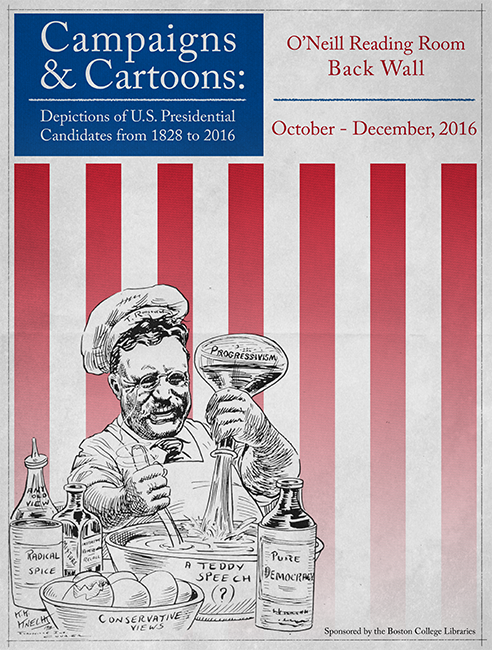Cartoonists have satirized United States presidential candidates since the early 19th century. These works promote debate by questioning a candidate’s character, skill and judgement. They scrutinize the candidate’s campaign tactics and their ability to serve as an effective leader. Often these cartoons provoke an emotional response in the viewer, whether it be shock, laughter or disgust. Cartoonists test the limits of political discourse and spark controversy with their views and portrayals as they exercise their right to free speech. They also bring levity and humor to serious discussions about future presidential leadership. Historically political cartoons were printed in newspapers and magazines. Today as society relies more heavily on internet news sources, cartoonists use webcomics and social media to share their work.
O'Neill Reading Room Back Wall Exhibit
There are three horizontal cases against the Back Wall of the O'Neill Reading Room.
Campaigns & Cartoons
Depictions of U.S. Presidential Candidates from 1828 to 2016
October - December 2016

Cartoonists have satirized United States presidential candidates since the early 19th century. These works promote debate by questioning a candidate’s character, skill and judgement. They scrutinize the candidate’s campaign tactics and their ability to serve as an effective leader. Often these cartoons provoke an emotional response in the viewer, whether it be shock, laughter or disgust. Cartoonists test the limits of political discourse and spark controversy with their views and portrayals as they exercise their right to free speech. They also bring levity and humor to serious discussions about future presidential leadership. Historically political cartoons were printed in newspapers and magazines. Today as society relies more heavily on internet news sources, cartoonists use webcomics and social media to share their work.

